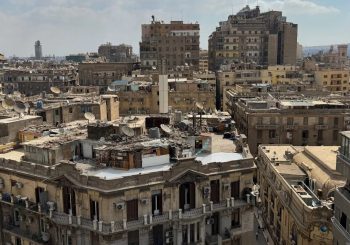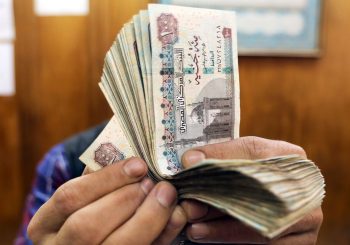More than 1,000 artifacts spanning 3500 years of history looted or destroyed during Egypt’s violence
By Giacomo Crescenzi, contributor, EgyptianStreets.com
The Mallawi Museum, in the city of Minya, Upper Egypt, was allegedly looted and ransacked in the night between Thursday 15 and Friday 16 of August 2013.
You can really get an idea of the scale of damages since pictures and videos have started to circulate in numbers on the web. What you can see are mutilated ancient statues and broken glass cases once displaying rare artifacts, now emptied of their treasures.
An itemized list of the stolen objects has not been officially released yet but over 1000 artifacts are reported to have gone missing from the Mallawi Museum.
Among certain people in Egypt there is an overall feeling of loss and literal fury for a blatant attack to the cultural heritage of the country.
According to a statement released by the Ministry of Antiquities; Mohamed Ibrahim, pro-Morsi supporters were responsible for this criminal act as protesters first announced a sit-in in the museum’s garden and then allegedly broke in.
Surveillance cameras were damaged and so far there is no legal proof to back up this statement. However, it all makes a lot of sense given the jaw-dropping declarations released by certain MB leaders against the cultural patrimony of Egypt during the time of political power.

The professed MB rhetoric framed the precious remnants of the Egyptian past not as something to cherish and protect but as blasphemous icons that must be destroyed. This idea was and is pure madness.
Unfortunately this attempt at manipulating the perception of the Egyptian cultural identity and promote vandalism had a concrete outcome in the “attack” to the Mallawi Museum.
A big share of responsibility lies in the hands of the institutions as well. Eyewitnesses of the Mallawi Museum incident reported that police forces were not present on site. The state is allocating the entirety of its man power over the effort of “securing” a fast growing number of areas where protests are taking place in addition to key institutional, logistical and diplomatic facilities.
It seems there is simply not enough police to protect and guard the countless archeological sites and museums. The result of this lack of resources is that since the #Jan 25 events the Egyptian cultural patrimony has been at stake. The Egyptian Museum itself was looted and vandalized during the first days of the revolution and relentless unauthorized excavations have been taking place across Egypt.
The Mallawi Museum incident is only the last of a series of criminal and unlawful acts perpetrated against Egypt’s cultural heritage over the last years but it is quickly becoming a symbol of the fight put in place by several people and organizations to protect it.
The institutions seem to have taken the matter of the Mallawi Museum quite seriously and the Minister of Antiquities tasked an archaeological committee to inspect the site and draft a list of missing objects to be shared with the prosecutor-general pending an investigation. According to the minister the list will also be shared with all Egyptian ports to prevent any attempt to smuggle the stolen artifacts outside the country.

On a different level, the initiative “Stop the Heritage Drain”, supported by a team of volunteers, has already put together a comprehensive but not exhaustive photography catalogue of the Mallawi Museum’s artifacts and it’s adamantly campaigning through its Facebook page to raise awareness and share as much information as possible in a timely fashion.
Something seems to be moving already as today two stolen statues depicting the Egyptian deity Osiris were returned to the authorities, this is indeed a positive sign.
The idea of having those artifacts destroyed or disappearing inside secret private collections of wealthy people is utterly despicable, not only because of the intrinsic value of the objects themselves but especially because of what they represent both historically and in light of the current events.
Those objects are the symbol of a country that since the dawn of time strives for greatness and overcomes obstacles.
Those stolen and broken artifacts offer the mean to meaning to Egypt as a model of civilization, a model that is still in progress and today faces great challenges of hatred and division.
Those artifacts are historical reminders of a very diverse country which is the product of countless influences, ethnicities and cultural assimilations over millennia. Risking of losing them in such a way has a profound allegorical meaning in nowadays Egypt as it shows how easily we can lose track of who we were and who have we become.







Comments (12)
Reblogged this on Ned Hamson Second Line View of the News.
Reblogged this on Oyia Brown.